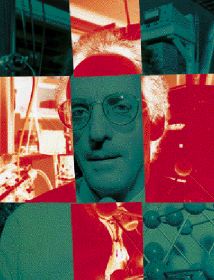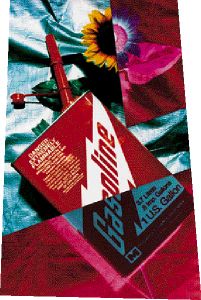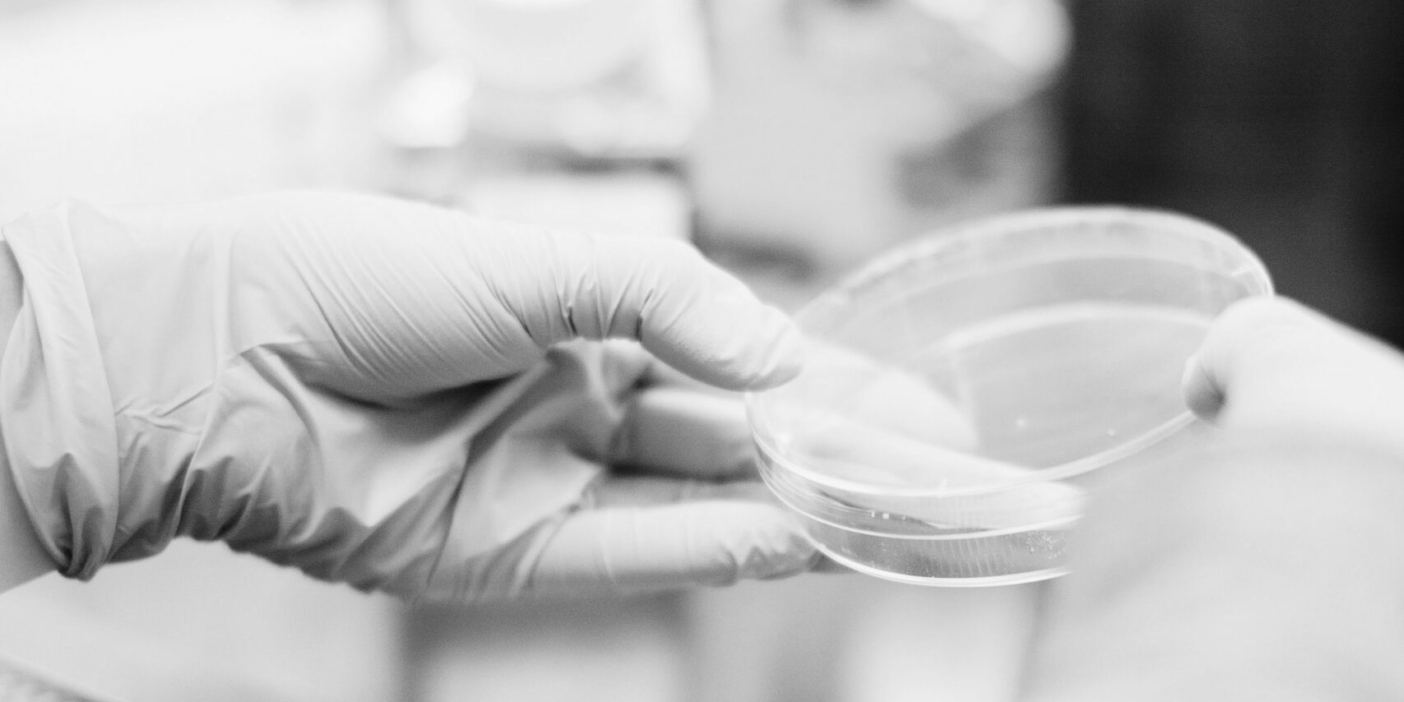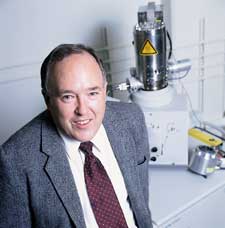By M. Sue Bergin
- Evil-looking mushroom clouds rise from surplus weapons being detonated by the U.S. Army in Utah’s west desert. Is there anything harmful in the plumes, or do they just appear malevolent?
- Employees working in the basement of a downtown Provo flower shop are becoming sick from fumes that smell like gasoline. What exactly is in the fumes, and could they be coming from a leaky tank belonging to one of three nearby gas stations?
- Catfish in the Black River in Ohio are developing tumors at an alarming rate. Is there a carcinogen in the sediment they feed on, and if so, where is it coming from?
BYU chemistry professor Milton L. Lee solved each of these cases using powerful technology he has pioneered over the last 25 years. His innovations, which have yielded 10 patents, separate complex chemical mixtures at the molecular level so they can be identified and quantified. In the preceding scenarios, Lee determined the plumes of smoke were harmless, pinpointed the offending gas station, and found that the Black River sediment did indeed contain carcinogens from a river-side steel mill.
 At barely mid-career Lee is a world leader in analytical chemistry. Instruments he developed dot the separation science landscape, and he has been showered with some of chemistry’s most prestigious national and international awards. But talking to him, you would never know his accomplishments extend so far and wide.
At barely mid-career Lee is a world leader in analytical chemistry. Instruments he developed dot the separation science landscape, and he has been showered with some of chemistry’s most prestigious national and international awards. But talking to him, you would never know his accomplishments extend so far and wide.
He’s an extremely humble and modest fellow,” says Chemistry Department chair Francis R. Nordmeyer.
In 1998 Lee garnered BYU’s highest honor when he was named the 36th Karl G. Maeser Distinguished Faculty Lecturer. With the honor comes an obligation to speak about one’s work, and at Lee’s November address, he revealed himself to be both a consummate scholar and a scientist who knows how to translate his work for a lay audience with clarity and humor. If he ever begins to feel like he’s something special, he told his listeners in the Wilkinson Center Ballroom, a mental instant replay of any BYU football game brings him back to earth. “I’ve never known any [scientist] to have 60,000 spectators at a scientific talk,” he said.
Magnifying the Unseen
During an interview in his office in the Ezra Taft Benson Building, Lee exudes that same combination of intellectual acumen and average guy-ness. One wall is covered with awards, but the professor is wearing a Looney Tunes denim shirt. Three-dimensional models of molecules sit on a shelf, and so do stones and crystals from Lee’s rock-hounding days.
Lee is an analytical chemist, which makes him something of a “chemical detective,” he says, because he investigates the composition of complex chemical mixtures. But un-like Sherlock Holmes, whose smallest clues were visible with a magnifying glass, Lee must probe for evidence at the unseen level of atoms and molecules.

“Chromatography can give us a fingerprint of the gasoline from different tanks…. We pinpointed exactly which pump, which tank, and which station was leaking and seeping underground into that flower shop,” Lee says. The leaky tank was fixed, and the shop was able to resume using its basement.”
As the basic building blocks of all matter, atoms bond together to form molecules, which are the fundamental units of chemical compounds. Virtually everything is composed of mixtures of such compounds, and the only way to fully understand the composition of a substance is to separate it into pure compounds. The process might be compared to separating a mixture of different kinds of rice. With a good pair of tweezers, an excellent pair of eyes, and a lot of time and patience, you could separate the rice medley into piles of what might turn out to be brown, wild, white, and basmati. Now you know the constituents of your mixture, and you can measure the quantity of each. If you had to do such an analysis often, you might even come up with a multilayered sieve that accomplishes the job automatically.
But what if you need to know what’s in marijuana smoke, fumes in a basement, or the blood of a murder victim–all chemical mixtures that could contain hundreds of ingredients invisibly commingled at the molecular level?
“There’s no such thing as submicroscopic tweezers,” says Lee. So scientists began developing instruments that could separate components using chemical tricks. The chief tool they came up with was chromatography, a family of techniques in which a sample to be analyzed is injected into a column or tube.
On the inside of the column, special surfaces and coatings delay the journey of some components while letting others flow freely. The components thus exit the column at different times, each one creating a spike on the chromatographic profile–a computer readout that can yield several to hundreds of spikes, depending on the complexity of the mixture. The higher the spike, the greater the quantity of that particular chemical. These spiked graphs then serve as a sort of chemical fingerprint.
In the early days of chromatogra-phy, a mixture of chemical compounds would be pumped through a relatively large glass or metal column packed with a visible white silica material. The packing material acted like a sieve, separating the mixture somewhat crudely by today’s standards. “To get finer separations, the process had to be miniaturized,” says Lee. When he began his PhD at Indiana University in 1971, he was introduced to the first step in that miniaturization–the spanking new “capillary tube” or “microcolumn.”
To the naked eye, the tiny capillary looks a lot like a strand of hair. While hair is made of protein and is solid, the microcolumn fiber is made of synthetic quartz and is hollow, with an opening as small as 50 microns in diameter–50 millionths of a meter. Within a few years, and with key innovations by Lee, this device would revolutionize analytical chemistry by making it possible to separate mixtures at a finer level than ever before. For the last two and a half decades, all Lee’s separation methods have employed the capillary column, which he has dubbed the “common hollow thread” that unites his research.
One of Lee’s first experiences with this hollow thread was as a graduate student studying the cancer-causing chemicals in tobacco and marijuana smoke. Researchers already knew that smoking tobacco could cause cancer, but they had not yet scrutinized marijuana to the same degree. Using capillary chromatography, Lee was able to separate out hundreds of chemicals in the two complex mixtures–tobacco and marijuana. He came up with a surprising finding: marijuana smoke contains twice the amount of benzo[a]pyrene, a notorious carcinogen, as does tobacco smoke. “That’s one aspect of marijuana smoke you never hear about–that it causes cancer,” Lee says.
Finding Better Fingerprints
As Lee continued his research asa professor at BYU, he found he needed better separation techniques, so he invented them. One of his early innovations was a technique called supercritical fluid chromatography (SFC). A supercritical fluid is a gas under so much pressure that it becomes a flowing substance that is neither a gas nor a liquid. Its unique properties make this substance ideal for separations of polymers (the building blocks of plastics), hydrocarbons (such as petroleum), and drugs. But prior to Lee’s invention, no one knew how to utilize capillaries in supercritical fluid chromatography, and such separations were not possible.
To accomplish the task, he explains, “We fill the capillary tube with pressure as high as 450 atmospheres of carbon dioxide–that’s the equivalent of 46 Ford Explorers stacked on top of each other and resting on your arms.” Beginning in the mid-1980s, Lee’s patented SFC was commercially manufactured and remains a staple of separation science in laboratories throughout the world. “Anybody who knows about SFC thinks about Dr. Lee,” says Nordmeyer.
Lee also invented what has become the “Jaguar” time-of-flight mass spectrometer, an instrument so sensitive it can measure “just vapors in the air,” he says. In 1993 the Jaguar won an R&D 100 award, given by R&D Magazine to recognize the 100 most significant technological developments each year.
Sprinkled throughout Lee’s research and instrument innovations has been a steady stream of efforts to apply his knowledge to everyday problems. The Provo flower shop contaminated with gasoline fumes is a classic example. When the shop owner approached Lee, the owner had already asked three nearby gas stations to check for gas leaks, and all three said they couldn’t be the culprit. “It’s very expensive to dig down and look for a leaky gas tank, more expensive than letting a slow leak go,” Lee says. So he had a student take a sample of fumes in the shop’s basement and a sample of gasoline from every gas pump at all three gas stations.
“Gasoline is not a simple compound; it’s a very complex mixture with hundreds of chemicals. Chromatography can give us a fingerprint of the gasoline from different tanks. We injected the gasoline samples into this tiny capillary and looked at the different chemicals,” says Lee. In about one afternoon of lab time, he and his students had a match between the fumes from the shop and one of the gasoline samples.
“We pinpointed exactly which pump, which tank, and which station was leaking and seeping underground into that flower shop,” Lee says. The leaky tank was fixed, and the shop was able to resume using its basement.
Following the Trail
The son of a chemistry professor and the brother of eight siblings, four of whom also became chemists, Lee was steeped in the field from an early age. Instead of tinkering with a chemistry set as so many budding scientists do, the young Milton got exposure to a grown-up chemistry lab at Utah State University in Logan. “We’d go with Dad on weekends up to the chemistry building, and we’d be fascinated by the laboratories and the chemicals and everything. He didn’t really go out of his way to wow us with it–he was busy doing his thing–but we would look around and were always impressed,” he says.
Despite that early exposure, Lee went out of his way to avoid following the family chemistry trail by majoring in math during his first year at Utah State. “I had an older brother and a brother just younger than me majoring in chemistry, and I was trying to stay away from it.” But math was not the answer for him. “I just couldn’t see myself sitting at a desk doing calculations all the time.”
After returning from an LDS mission to Southern California, he switched to physics and began preparing for law school, thinking he might become a patent attorney. Soon after, he married Susan Hintze, and her nursing degree required an internship that wasn’t available in Logan. They moved to Salt Lake City, and there, relatively removed from family influences and any need to distance himself from them, Lee decided chemistry was his calling after all. Now at the University of Utah, he switched to a chemistry major with an inorganic emphasis.
When he later arrived at Indiana to begin graduate work, he spoke individually to all the inorganic chemistry professors about their work, hoping to find research that interested him. Nothing clicked.
“I panicked,” says Lee. “I decided to look over the list of all chemistry faculty. There was a new faculty member just hired, and he was working in this area called chromatography, which I didn’t know much about at all. He was interested in air pollution, and so I thought, ‘Well, at least it sounds relevant to real life and like something I could get interested in.’ It was a fantastic decision because it opened up this whole world.”
After Indiana University, Lee completed a postdoctoral year at the Massachusetts Institute of Technology before joining BYU as an assistant professor in 1976. He became a full professor in 1984 and in 1985 was named the H. Tracy Hall Professor of Chemistry, a distinction whose namesake was an accomplished BYU chemist and the university’s first Karl G. Maeser Distinguished Faculty Lecturer, 35 years ago.
To date, Lee’s publications total more than 400 and his awards are plentiful. Most recently he has received the M.J.E. Golay Award (named for the inventor of the capillary tube), the American Chemical Society Award in Chemical Instrumentation, an honorary doctorate from Uppsala University in Sweden, and the 1999 Stephen Dal Nogare Award, an honor given at the world’s largest conference of analytical chemists.
As consumed as Lee is by chemistry, science is not all there is to the man. According to students and colleagues, he is a person of impeccable integrity, constant service, and devotion to friends and to his wife and four children. And he’s athletic to boot. His running partner for the last 20 years, BYU zoology professor Gary M. Booth, says Lee is one of the kindest, most generous people he knows.
“He’s just one of those colleagues you count as a friend,” says Booth. “He doesn’t like to talk about it, but essentially he made my career. He provided the chemistry support when I was going after some harebrained molecule. I spent hours and hours over there [with Lee in his lab], and it made all the difference in the world.”
Several of Lee’s associates mentioned that though he has unusually broad interests, he focuses intensely on whatever he’s chosen to work on at any given moment. “When he goes after something he does it with all his effort. It’s always a total commitment,” Nordmeyer says.
Lee’s newest focus is teaching. After instructing only upper-level chemistry classes for more than two decades, he has taught introductory chemistry for the last two years and finds it a refreshing challenge. “When you go into a class of 250 students and teach them their first class in chemistry, that’s a different kind of challenge than when you’re teaching classes of 10 to 50,” he says.
Booth has periodically made guest appearances in classes with Lee and says his colleague’s teaching is so gifted it shows what he calls “a spark of the divine fire.” Lee recognizes the students who come in with a limited background, Booth says, and makes sure they understand basic concepts step by step so they will have the foundation to grasp more complex material later. “He is able to tap into kids that I would describe as being in the lower quartile.”
In the end, it’s the grandeur of the earth and chemistry’s role in that grandeur that keeps Lee hunting for clues and seeking discovery. “This world we live in is very complex,” he says. “It’s wonderful, and it’s majestic the way everything fits together to impart the properties of all the chemicals that are around us.”









